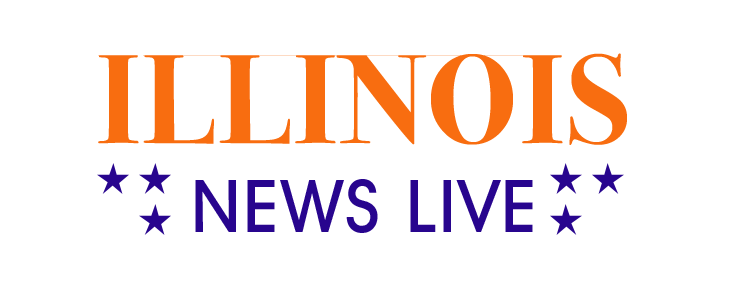Thousands face Medicaid whiplash in South Dakota and North Carolina

Until recently, Jonathan Murray relied on Medicaid to pay for multiple health conditions, including chronic insomnia. Murray, a 20-year-old restaurant worker in the college town of Brookings, South Dakota, said he would have stayed up for days without the medication.
“I’m too tired to sleep, so I won’t be able to do much work,” he says.
Murray’s mother paid $1,548 more than usual for health insurance over three months to help Murray pay for sleeping pills and other drugs, lab work, and doctor visits.
Murray was surprised to lose his Medicaid coverage on April 1, even though he would likely be eligible again on July 1, and had to scramble to find insurance options. .
Due to the complicated situation in South Dakota and North Carolina, Murray isn’t the only one to experience whiplash in Medicaid coverage.
Medicaid is a joint federal and state health insurance program for low-income or disabled individuals. During the nationwide COVID-19 public health emergency, states were barred from removing people from programs even if they were disqualified.
This rule has now expired, allowing states to redetermine whether a Medicaid participant is still eligible.federal government estimated 15 million Americans would lose Medicaid coverage You may also be disqualified or enrolled in the Children’s Health Insurance program due to paperwork issues.
But as South Dakota and North Carolina remove participants from Medicaid, they will also add participants to their programs. that is, South Dakota voters and North Carolina legislator Recently, an expansion of Medicaid was approved, increasing the number of people covered by the program.
“It would have been nice if they had kept workers until the expansion, so they wouldn’t have to lay off so many people,” said Kathy Murray, Jonathan’s mother.
Health policy experts say South Dakota may have tried to prevent participants from temporarily losing Medicaid coverage.
Cathy Murray
Joanne Alker, executive director of the Center for Children and Families at Georgetown University, said state officials “say federal regulations mean people have to be kicked out before expansion, but that’s not true.” Stated. “They definitely could have built this in a way that these people wouldn’t experience loss of coverage.”
Lucy Dugneau, director of Medicaid campaigns for the American Cancer Society Cancer Action Network, agreed. South Dakota and North Carolina “cannot really stop the unwinding process. But they have flexibility In terms of how we organize our subscribers,” she said.
Alker and Dagueneau said states do not need to begin the mitigation process immediately, and if they did, it could delay the review of registrants who are likely to requalify under the expansion.
Residents of South Dakota and North Carolina who want to avoid a health insurance gap can apply for private insurance subsidized under the Affordable Care Act. You can then reapply for Medicaid once applications for expanded coverage begin. However, if you do not have insurance during the gap, you may avoid treatment or face high bills.
South Dakota is 1 of 5 states Culling began on April 1st, the earliest possible date. The Medicaid expansion will go into effect on July 1st. About 16,000 South Dakotans were disenrolled in April, more than 1,700 of which will be re-enrolled through expansion. According to state data.
North Carolina will begin deenrolling people who are no longer eligible for Medicaid on July 1st. The state has not set an expansion schedule for Medicaid, but it is expected to occur within the lifting period, which runs through May 2024.
Jay Ludlum, deputy director of the North Carolina Medicaid Program, said it would be difficult to avoid temporarily unenrolling people because of the uncertainty of when. Ludlum said about 300,000 North Carolinians are expected to be excluded from Medicaid during the relaxation period. He estimates that one-third of those will requalify after the expansion.
Kathy Murray added Jonathan to her workplace insurance plan. This more than doubled her premium in the months that followed. She said her son will not be without medical care, although she will not be able to make several other payments during this period.
He said South Dakota’s approach appeared inefficient as state officials had to unenroll and reenroll some people in a short period of time. “There’s a lot of work happening because state officials are sending paperwork and trying to requalify everyone,” she said.
South Dakota Department of Social Services Commissioner Matt Althoff said the agency’s retirement plan is “based on compliance with CMS regulations, the limitations of the technology used to support South Dakota Medicaid, and the overall impact on customers.” rice field.
The agency wrote: March document “We are working closely with the Federal Centers for Medicare and Medicaid Services to explore waivers and flexibility during the pre-enlargement mitigation period, and we will continue to do so,” he said.
Althoff did not respond to a question asked by KFF Health News if the state had consulted with federal officials about avoiding temporary disqualification. CMS spokeswoman Sarah Ronald said she could not comment on whether CMS had related conversations with officials in South Dakota or North Carolina.
South Dakota can’t prevent people who might be eligible to reapply for Medicaid from temporarily losing coverage, but it’s taking steps to ensure they know to reapply.
The state’s current rule is to test people who lost Medicaid eligibility to see if they would re-eligible after Medicaid was expanded.Then I should have sent you a letter encourage re-application.
Since 2014, the Affordable Care Act has allowed states to provide Medicaid coverage to more people, with the federal government paying 90% of the cost.all but 10 States Agree to Expand Medicaid.
Currently, adults in South Dakota are eligible for Medicaid if they have a recognized disability or have children and earn up to 46% of the federal poverty level. That’s $13,800 for a family of four.
Jonathan Murray was Medicaid eligible as a child. However, he lost his eligibility as he came of age during a public health emergency.
Expanding Medicaid will allow adults with incomes up to 138% of the federal poverty level, or $20,120 per adult, to enroll in the program, with or without children. Murray earns a part-time job as a restaurant cook and a dishwasher, so he should be able to requalify and start receiving Medicaid starting July 1.
South Dakota helps people understand and apply for health insurance. Program manager Penny Kelly said so far, everyone the group has helped after dropping out of Medicaid has been eligible for market-based, subsidized private plans under the Affordable Care Act. It is said that there is For low-income earners, subsidies can cover most or all of their premiums.
South Dakota Voice for Peace, a non-profit organization, is helping people in the process of ending and expanding Medicaid. Outreach coordinator Carla Graciano said many were confused by the mitigation process because they hadn’t had to worry about health insurance for more than three years during the public health emergency.
“We’re hearing concerns that people could lose their health insurance,” Graciano said. “It stresses a lot of people.”
KFF Health NewsFormerly known as Kaiser Health News (KHN), it is a national news editorial office that produces in-depth journalism on health issues and is one of its core operating programs on health issues. KFFMore — An independent source for health policy research, polls and journalism.
https://www.cbsnews.com/news/medicaid-eligibility-whiplash-south-dakota-north-carolina/ Thousands face Medicaid whiplash in South Dakota and North Carolina


